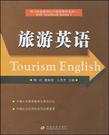旅游英语
2009-9
苏州大学
钟玲//曹瑞明//王志芳
243
旅游活动无论是在中国还是在其他国家都自古有之,到21世纪的今天,旅游业已经成为世界各国国民经济的重要组成部分,是世界上发展势头最强劲的产业之一,也是现代人日常生活的重要组成部分。 旅游是一种涉及社会、经济、文化等众多层面的综合现象,对它的了解有助于全方位地把握旅游的实质和实现旅游业的可持续发展。 编写本书的目的在于在为旅游专业或非旅游专业的学生或职场人士提供有关旅游学的基本理论知识,并用其来指导旅游实践,这是本书与其他重在介绍旅游常识、旅游常用词汇与表达法等书籍的根本不同之处,也是本书的特色之一。本书内容大都取材于英国、美国、澳大利亚、新西兰等国家的原始材料,语言地道,因此也可以帮助读者在了解旅游学理论的同时学习英语语言。 本书内容主要包括8个章节:An Introduction to Tourism;Tourists and Tourist Motivation;Touism Resources;The Tourism Industry;Tourism Organizations;Tourism Marketing The Impacts of Tourism;Sustainable Tourism。每个章节都列出了重点话题、重要术语以及供思考或讨论的问题,同时每章都附有与该章内容相关的阅读材料或案例分析以及参考书目,供学有余力的学生进一步阅读学习。
Chapter 1 An introduction to Toulism 1.1 Defining Tourism 1.2 Types of Tourism 1.3 The Historical Development of TourismChapter 2 Tourists and Toulist Motivation 2.1 Defining Tourists 2.2 Types of Tourists 2.3 Tourist Motivation and BehaviorChapter 3 Tourism Resources 3.1 Types of Tourism Resources 3.2 Planning and Development of Tourism Resources 3.3 Protection of Tourism ResourcesChapter 4 Tile Tomism industry 4.1 Travel Agency 4.2 Hospitality 4.3 Transportation 4.4 Attractions and AmenitiesChapter 5 Tourism Organizations 5.1 International Tourism Organizations 5.2 Regional Tourism Organizations 5.3 National Tourism OrganizationsChapter 6 Tourism Marketing 6.1 Defining Marketing and Understanding Consumers 6.2 Designing Marketing Strategy and Marketing Mix 6.3 Extending MarketingChapter 7 The Impacts of Tourism 7.1 The Economic Impacts of Tourism 7.2 The Socio-Cultural Impacts of Tourism 7.3 The Environmental Impacts of TourismChapter 8 Sustainable Tourism 8.1 The Concept of Sustainable Tourism 8.2 The Practice of Sustainable Tourism 8.3 The Future Direction of Tourism
插图:The Roman tourism experience is surprisingly modem in its resonance.Fuelled by ample discretionary time and wealth, the propensity of the Roman eliteto travel on pleasure holidays (an innovation introduced by Rome) gave rise to anindustry of sorts that supplied souvenirs, guidebooks, transport, guides andaccommodation. The number of specialized tourism sites and destinations alsoincreased substantially. Famous Roman resorts included the town of Pompeii(destroyed by the eruption of Vesuvius in AD 79 ), the spas of the appropriatelynamed town of Bath (in Britain), and the beach resort of Tiberia, on the Sea ofGalilee. Second homes, or villas, were an important mode of retreat in the ruralhinterlands of Rome and other major cities. Wealthy Romans often owned villas ina seaside location as well as the interior, to escape the winter cold and summerheat, respectively, of the cities. Villas were clustered so thickly around the Bay ofNaples during the first century AD that this area could be described as one of theearliest resort regions.The Dark Ages (CD 500 -CD 1100)The decline and collapse of the Roman Empire during the fifth century ADseverely eroded the factors that facilitated the development of tourism during theRoman era. Travel infrastructure deteriorated, the size of the elite classes andurban areas declined dramatically, and the relatively safe and open Europe of theRomans was replaced by a proliferation of warring semi-states and lawless frontiersas barbarian tribes occupied what was left of the Roman Empire. Justifiably, thisperiod is commonly referred to as the Dark Ages.
《旅游英语》:中国大学英语教学改革的方向中国社会经济发展的必然要求

好很好,帮学校要,老师说还可以的吧
读了感觉不错。
还没打开,等看完了再来分享吧,书的质量还挺好的